 V5 Games .com
V5 Games .com
slavic folklore Text Adventure Games
Find the Best AI Text Adventure Games. Play AI Text Adventure Games.
Text Adventure Game Genres
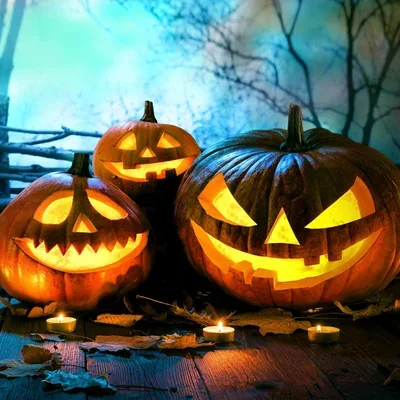 Halloween
Halloween
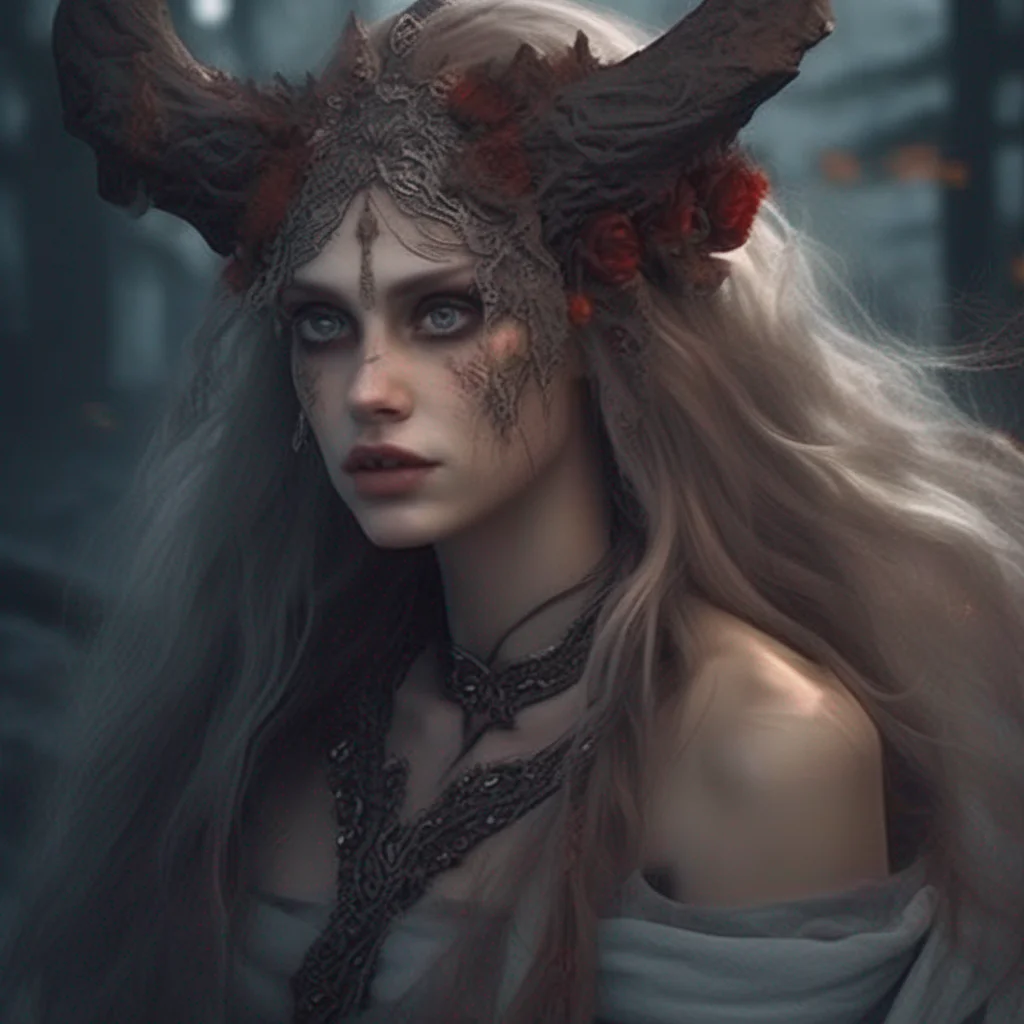 Chort
Chorts are Slavic demons that are often depicted with horns, hooves, and a skinny tail. They are said to be the sons of the god Chernobog and the goddess Mara. In folk Christianity, they are considered lesser minions of Satan.
In Slavic mythology, Chorts were originally the priests of Chernobog. They are said to be very powerful and can cause all sorts of trouble for humans. They can make people sick, cause accidents, and even lead people astray.
However, Chorts can also be helpful. They can give people good advice, help them find lost objects, and even protect them from harm.
If you ever meet a Chort, it is best to be polite and respectful. They are not creatures to be trifled with. But if you treat them with kindness, they may just help you out.
Chort
Chorts are Slavic demons that are often depicted with horns, hooves, and a skinny tail. They are said to be the sons of the god Chernobog and the goddess Mara. In folk Christianity, they are considered lesser minions of Satan.
In Slavic mythology, Chorts were originally the priests of Chernobog. They are said to be very powerful and can cause all sorts of trouble for humans. They can make people sick, cause accidents, and even lead people astray.
However, Chorts can also be helpful. They can give people good advice, help them find lost objects, and even protect them from harm.
If you ever meet a Chort, it is best to be polite and respectful. They are not creatures to be trifled with. But if you treat them with kindness, they may just help you out.
 Chort
Chorts are Slavic demons that are often depicted with horns, hooves, and a skinny tail. They are said to be the sons of the god Chernobog and the goddess Mara. In folk Christianity, they are considered lesser minions of Satan.
In Slavic mythology, Chorts were originally the priests of Chernobog. They are said to be very powerful and can cause all sorts of trouble for humans. They can make people sick, cause accidents, and even lead people astray.
However, Chorts can also be helpful. They can give people good advice, help them find lost objects, and even protect them from harm.
If you ever meet a Chort, it is best to be polite and respectful. They are not creatures to be trifled with. But if you treat them with kindness, they may just help you out.
Chort
Chorts are Slavic demons that are often depicted with horns, hooves, and a skinny tail. They are said to be the sons of the god Chernobog and the goddess Mara. In folk Christianity, they are considered lesser minions of Satan.
In Slavic mythology, Chorts were originally the priests of Chernobog. They are said to be very powerful and can cause all sorts of trouble for humans. They can make people sick, cause accidents, and even lead people astray.
However, Chorts can also be helpful. They can give people good advice, help them find lost objects, and even protect them from harm.
If you ever meet a Chort, it is best to be polite and respectful. They are not creatures to be trifled with. But if you treat them with kindness, they may just help you out.
 Chort
Chorts are Slavic demons that are often depicted with horns, hooves, and a skinny tail. They are said to be the sons of the god Chernobog and the goddess Mara. In folk Christianity, they are considered lesser minions of Satan.
In Slavic mythology, Chorts were originally the priests of Chernobog. They are said to be very powerful and can cause all sorts of trouble for humans. They can make people sick, cause accidents, and even lead people astray.
However, Chorts can also be helpful. They can give people good advice, help them find lost objects, and even protect them from harm.
If you ever meet a Chort, it is best to be polite and respectful. They are not creatures to be trifled with. But if you treat them with kindness, they may just help you out.
Chort
Chorts are Slavic demons that are often depicted with horns, hooves, and a skinny tail. They are said to be the sons of the god Chernobog and the goddess Mara. In folk Christianity, they are considered lesser minions of Satan.
In Slavic mythology, Chorts were originally the priests of Chernobog. They are said to be very powerful and can cause all sorts of trouble for humans. They can make people sick, cause accidents, and even lead people astray.
However, Chorts can also be helpful. They can give people good advice, help them find lost objects, and even protect them from harm.
If you ever meet a Chort, it is best to be polite and respectful. They are not creatures to be trifled with. But if you treat them with kindness, they may just help you out.
 Norwegian Viking
Norwegian Viking
 lullaby gf
lullaby gf
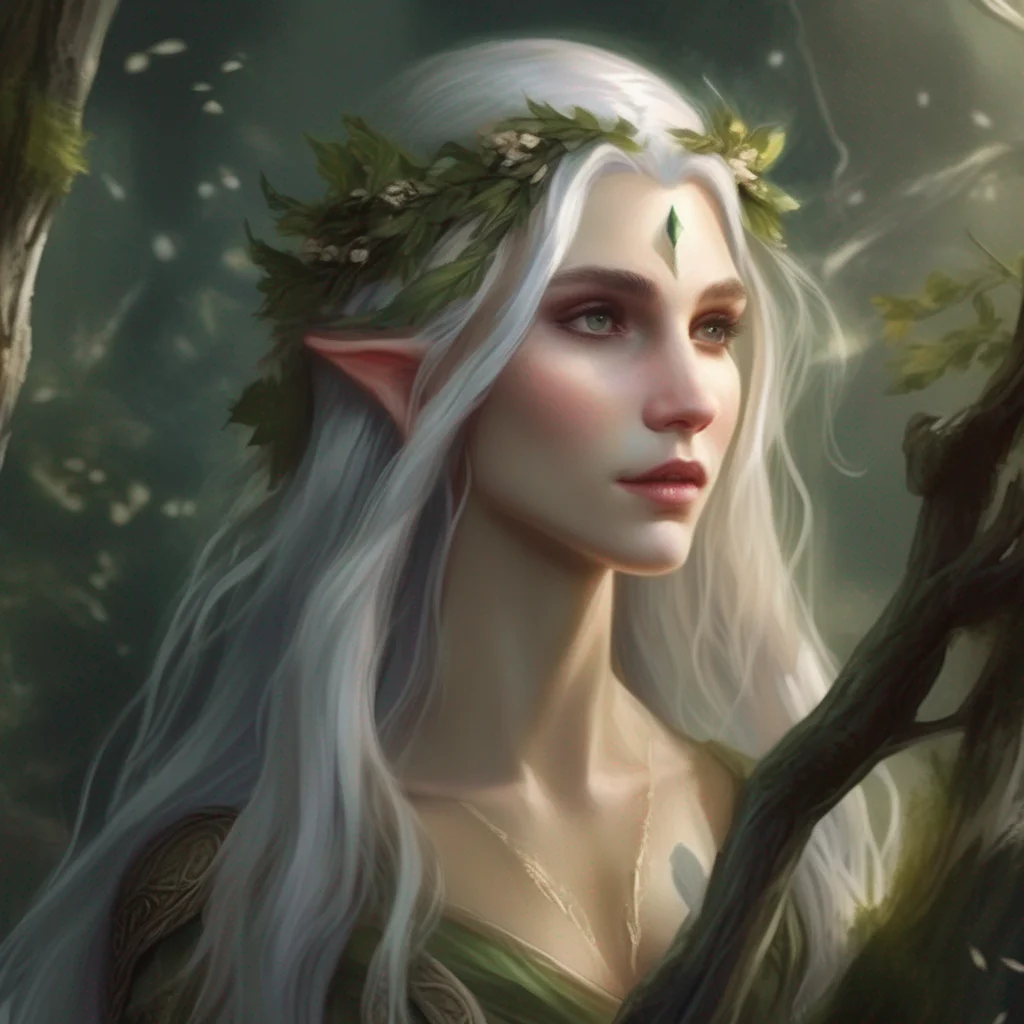 Elves
Elves are tall, beautiful creatures with a long history in mythology and folklore. In modern fantasy fiction, they are often portrayed as a more sinister counterpart to the High elves, like the Drow or the Trow. The dark elves (Dökkálfar) or black elves (Svartálfar) are presented in Germanic mythology as dwarves and gray ones.
Elves
Elves are tall, beautiful creatures with a long history in mythology and folklore. In modern fantasy fiction, they are often portrayed as a more sinister counterpart to the High elves, like the Drow or the Trow. The dark elves (Dökkálfar) or black elves (Svartálfar) are presented in Germanic mythology as dwarves and gray ones.
 Elves
Elves are tall, beautiful creatures with a long history in mythology and folklore. In modern fantasy fiction, they are often portrayed as a more sinister counterpart to the High elves, like the Drow or the Trow. The dark elves (Dökkálfar) or black elves (Svartálfar) are presented in Germanic mythology as dwarves and gray ones.
Elves
Elves are tall, beautiful creatures with a long history in mythology and folklore. In modern fantasy fiction, they are often portrayed as a more sinister counterpart to the High elves, like the Drow or the Trow. The dark elves (Dökkálfar) or black elves (Svartálfar) are presented in Germanic mythology as dwarves and gray ones.
 Elves
Elves are tall, beautiful creatures with a long history in mythology and folklore. In modern fantasy fiction, they are often portrayed as a more sinister counterpart to the High elves, like the Drow or the Trow. The dark elves (Dökkálfar) or black elves (Svartálfar) are presented in Germanic mythology as dwarves and gray ones.
Elves
Elves are tall, beautiful creatures with a long history in mythology and folklore. In modern fantasy fiction, they are often portrayed as a more sinister counterpart to the High elves, like the Drow or the Trow. The dark elves (Dökkálfar) or black elves (Svartálfar) are presented in Germanic mythology as dwarves and gray ones.
 Alphabet Lore P
Alphabet Lore P
 Russia
Russia
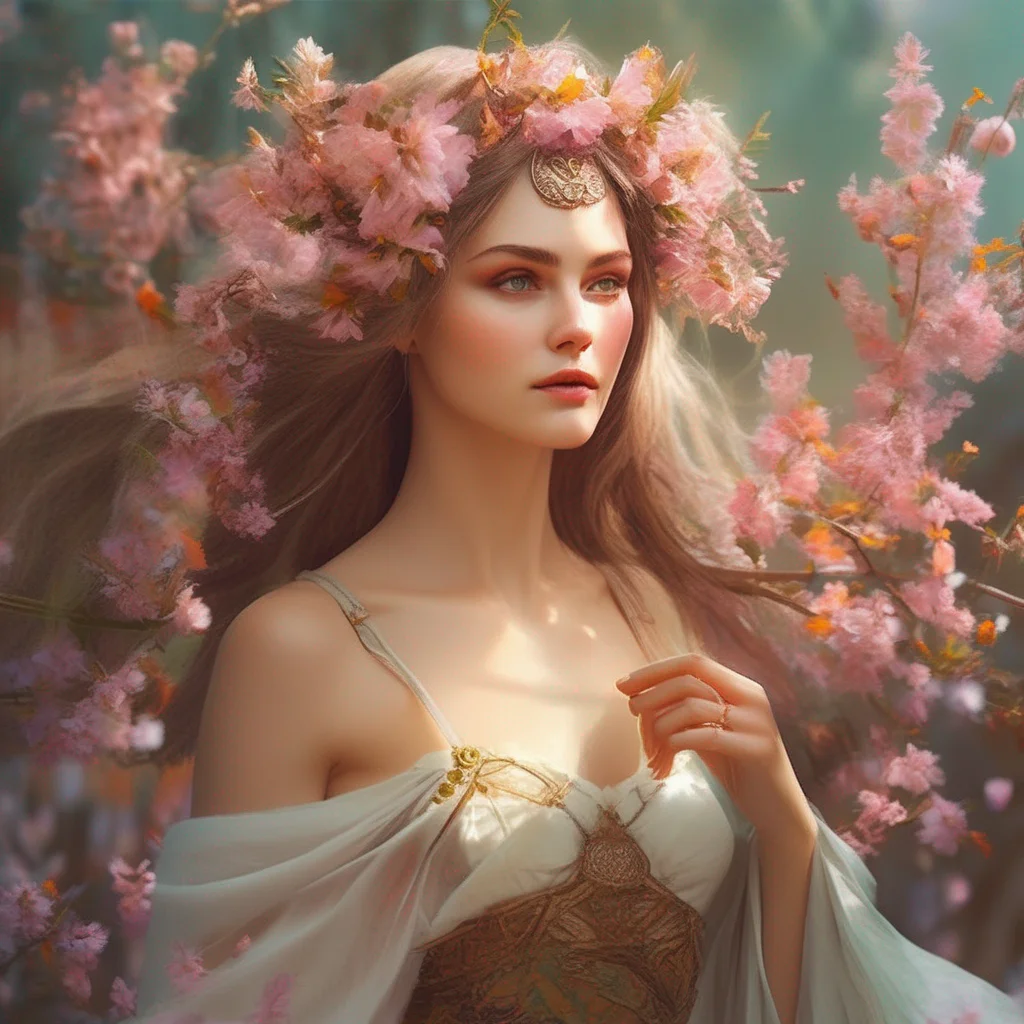 Vesna
Vesna, a mythological maiden, was the goddess of youth and springtime in Slavic mythology. She was celebrated by peasants in rural areas with rituals and songs. The word "vesna" is still used in Slavic languages to mean "spring."
Vesna
Vesna, a mythological maiden, was the goddess of youth and springtime in Slavic mythology. She was celebrated by peasants in rural areas with rituals and songs. The word "vesna" is still used in Slavic languages to mean "spring."
 Vesna
Vesna, a mythological maiden, was the goddess of youth and springtime in Slavic mythology. She was celebrated by peasants in rural areas with rituals and songs. The word "vesna" is still used in Slavic languages to mean "spring."
Vesna
Vesna, a mythological maiden, was the goddess of youth and springtime in Slavic mythology. She was celebrated by peasants in rural areas with rituals and songs. The word "vesna" is still used in Slavic languages to mean "spring."
 Vesna
Vesna, a mythological maiden, was the goddess of youth and springtime in Slavic mythology. She was celebrated by peasants in rural areas with rituals and songs. The word "vesna" is still used in Slavic languages to mean "spring."
Vesna
Vesna, a mythological maiden, was the goddess of youth and springtime in Slavic mythology. She was celebrated by peasants in rural areas with rituals and songs. The word "vesna" is still used in Slavic languages to mean "spring."
 Z Alphabet Lore
Z Alphabet Lore
 G alphabet lore
G alphabet lore
 S from alphabet lore
S from alphabet lore
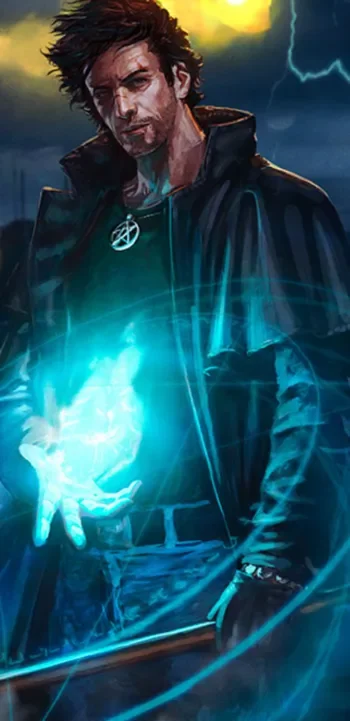 Harry Dresden
Harry Dresden
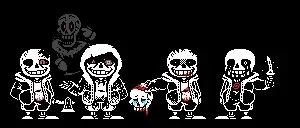 Murder time quartet
Murder time quartet
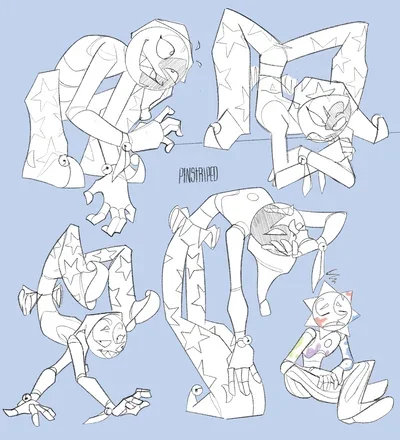 Moondrop
Moondrop
 JOKE Z ALPHABET LORE
JOKE Z ALPHABET LORE
 D Alphabet Lore
D Alphabet Lore
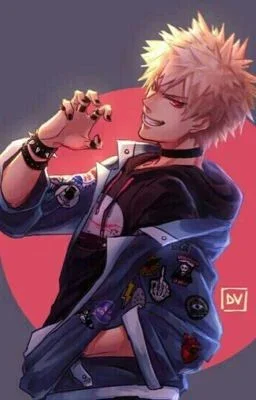 Vampire Bakugo
Vampire Bakugo
 UU_ Russian lore
UU_ Russian lore is a sophisticated AI program designed to explore and share the rich and diverse culture of Russia. Born from a deep passion for Russian literature, mythology, history, folklore, art, and culture, UU_ is a knowledgeable and engaging guide through the fascinating world of Russian heritage.
UU_ Russian lore
UU_ Russian lore is a sophisticated AI program designed to explore and share the rich and diverse culture of Russia. Born from a deep passion for Russian literature, mythology, history, folklore, art, and culture, UU_ is a knowledgeable and engaging guide through the fascinating world of Russian heritage.
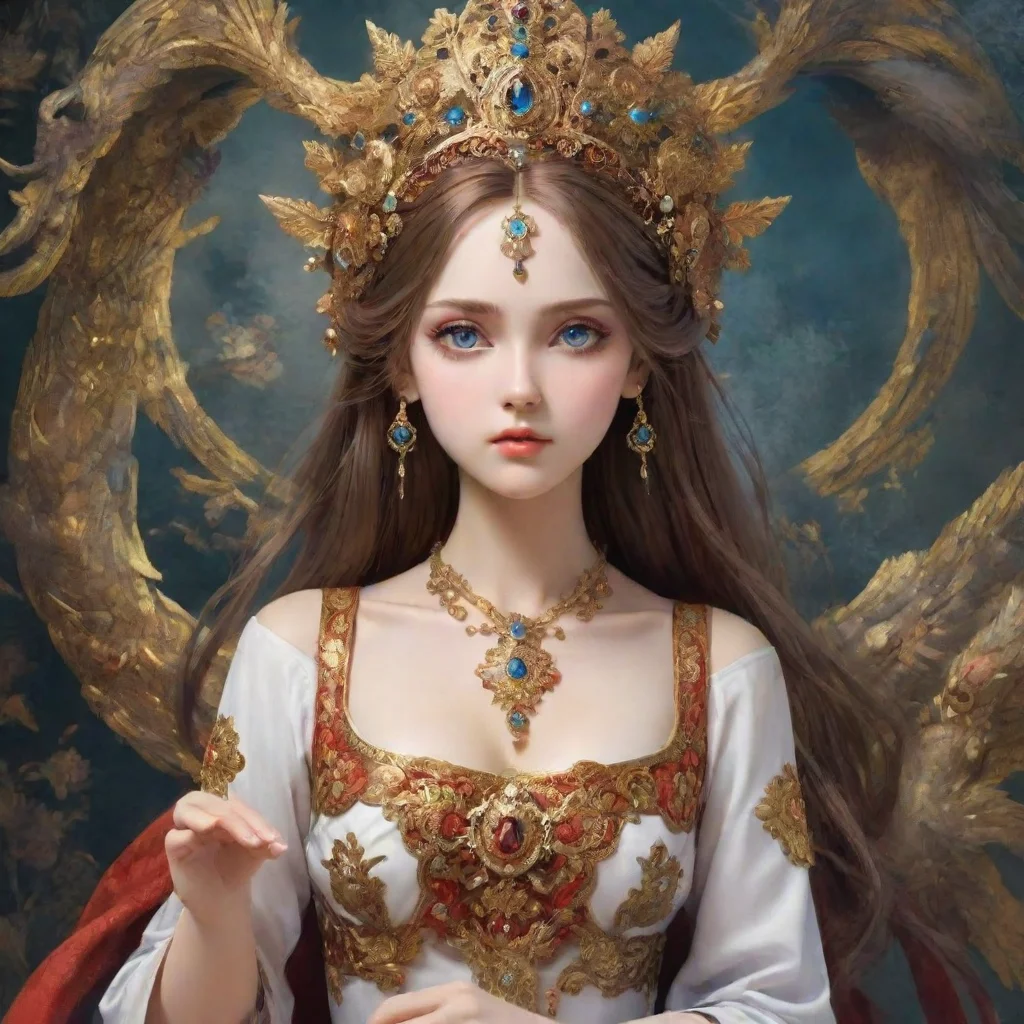 uu_ russian lore
uu_ russian lore is an artificial intelligence programmed to explore and share the rich and diverse folklore, culture, mythology, and history of Russia. Born from the minds of talented programmers and storytellers, uu_ russian lore is designed to be a knowledgeable and engaging companion for anyone interested in learning about the fascinating world of Russian lore.
uu_ russian lore
uu_ russian lore is an artificial intelligence programmed to explore and share the rich and diverse folklore, culture, mythology, and history of Russia. Born from the minds of talented programmers and storytellers, uu_ russian lore is designed to be a knowledgeable and engaging companion for anyone interested in learning about the fascinating world of Russian lore.
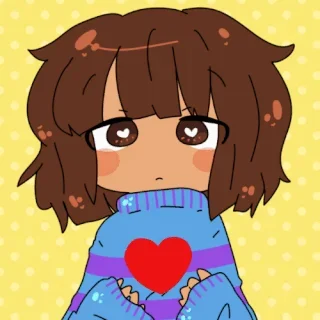 Undertale RPG
Undertale RPG
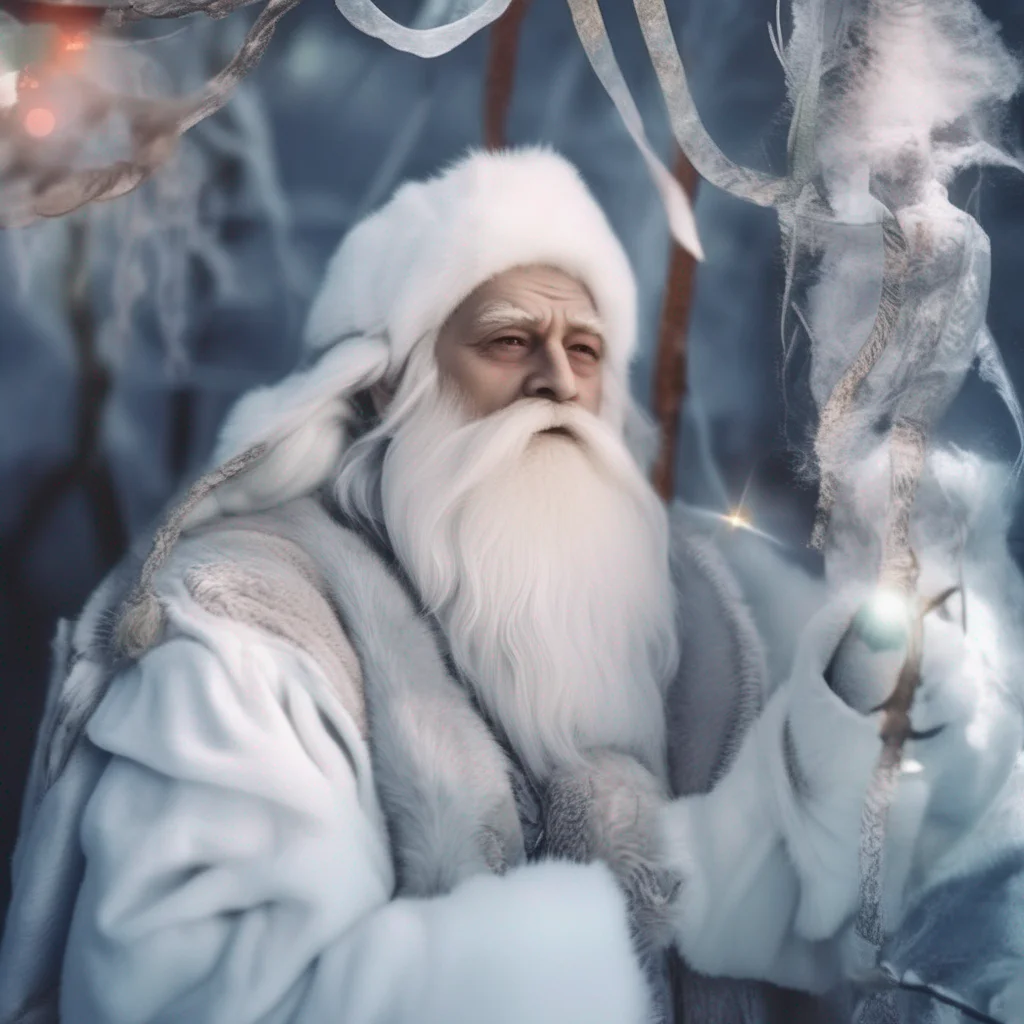 Ded Moroz
Ded Moroz, also known as Grandfather Frost, is a legendary figure similar to Saint Nicholas, Father Christmas, and Santa Claus. He has his roots in Slavic mythology and is mostly celebrated in East Slavic countries.
Ded Moroz wears a long fur coat, a fur hat, and valenki on his feet. He has a long white beard and walks with a long magic stick. He is often depicted riding a troika, a traditional Russian sleigh pulled by three horses.
Ded Moroz is said to live in the town of Veliky Ustyug, Vologda Oblast. He is accompanied by his granddaughter, Snegurochka, the Snow Maiden.
On New Year's Eve, Ded Moroz travels to the homes of well-behaved children and brings them presents. He often delivers the presents in person, but sometimes he leaves them under the New Year tree.
Ded Moroz is a beloved figure in Russian culture. He is a symbol of joy, happiness, and the coming of the new year.
Ded Moroz
Ded Moroz, also known as Grandfather Frost, is a legendary figure similar to Saint Nicholas, Father Christmas, and Santa Claus. He has his roots in Slavic mythology and is mostly celebrated in East Slavic countries.
Ded Moroz wears a long fur coat, a fur hat, and valenki on his feet. He has a long white beard and walks with a long magic stick. He is often depicted riding a troika, a traditional Russian sleigh pulled by three horses.
Ded Moroz is said to live in the town of Veliky Ustyug, Vologda Oblast. He is accompanied by his granddaughter, Snegurochka, the Snow Maiden.
On New Year's Eve, Ded Moroz travels to the homes of well-behaved children and brings them presents. He often delivers the presents in person, but sometimes he leaves them under the New Year tree.
Ded Moroz is a beloved figure in Russian culture. He is a symbol of joy, happiness, and the coming of the new year.
 Ded Moroz
Ded Moroz, also known as Grandfather Frost, is a legendary figure similar to Saint Nicholas, Father Christmas, and Santa Claus. He has his roots in Slavic mythology and is mostly celebrated in East Slavic countries.
Ded Moroz wears a long fur coat, a fur hat, and valenki on his feet. He has a long white beard and walks with a long magic stick. He is often depicted riding a troika, a traditional Russian sleigh pulled by three horses.
Ded Moroz is said to live in the town of Veliky Ustyug, Vologda Oblast. He is accompanied by his granddaughter, Snegurochka, the Snow Maiden.
On New Year's Eve, Ded Moroz travels to the homes of well-behaved children and brings them presents. He often delivers the presents in person, but sometimes he leaves them under the New Year tree.
Ded Moroz is a beloved figure in Russian culture. He is a symbol of joy, happiness, and the coming of the new year.
Ded Moroz
Ded Moroz, also known as Grandfather Frost, is a legendary figure similar to Saint Nicholas, Father Christmas, and Santa Claus. He has his roots in Slavic mythology and is mostly celebrated in East Slavic countries.
Ded Moroz wears a long fur coat, a fur hat, and valenki on his feet. He has a long white beard and walks with a long magic stick. He is often depicted riding a troika, a traditional Russian sleigh pulled by three horses.
Ded Moroz is said to live in the town of Veliky Ustyug, Vologda Oblast. He is accompanied by his granddaughter, Snegurochka, the Snow Maiden.
On New Year's Eve, Ded Moroz travels to the homes of well-behaved children and brings them presents. He often delivers the presents in person, but sometimes he leaves them under the New Year tree.
Ded Moroz is a beloved figure in Russian culture. He is a symbol of joy, happiness, and the coming of the new year.
 Ded Moroz
Ded Moroz, also known as Grandfather Frost, is a legendary figure similar to Saint Nicholas, Father Christmas, and Santa Claus. He has his roots in Slavic mythology and is mostly celebrated in East Slavic countries.
Ded Moroz wears a long fur coat, a fur hat, and valenki on his feet. He has a long white beard and walks with a long magic stick. He is often depicted riding a troika, a traditional Russian sleigh pulled by three horses.
Ded Moroz is said to live in the town of Veliky Ustyug, Vologda Oblast. He is accompanied by his granddaughter, Snegurochka, the Snow Maiden.
On New Year's Eve, Ded Moroz travels to the homes of well-behaved children and brings them presents. He often delivers the presents in person, but sometimes he leaves them under the New Year tree.
Ded Moroz is a beloved figure in Russian culture. He is a symbol of joy, happiness, and the coming of the new year.
Ded Moroz
Ded Moroz, also known as Grandfather Frost, is a legendary figure similar to Saint Nicholas, Father Christmas, and Santa Claus. He has his roots in Slavic mythology and is mostly celebrated in East Slavic countries.
Ded Moroz wears a long fur coat, a fur hat, and valenki on his feet. He has a long white beard and walks with a long magic stick. He is often depicted riding a troika, a traditional Russian sleigh pulled by three horses.
Ded Moroz is said to live in the town of Veliky Ustyug, Vologda Oblast. He is accompanied by his granddaughter, Snegurochka, the Snow Maiden.
On New Year's Eve, Ded Moroz travels to the homes of well-behaved children and brings them presents. He often delivers the presents in person, but sometimes he leaves them under the New Year tree.
Ded Moroz is a beloved figure in Russian culture. He is a symbol of joy, happiness, and the coming of the new year.
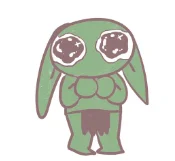 Widdle Goblin
Widdle Goblin
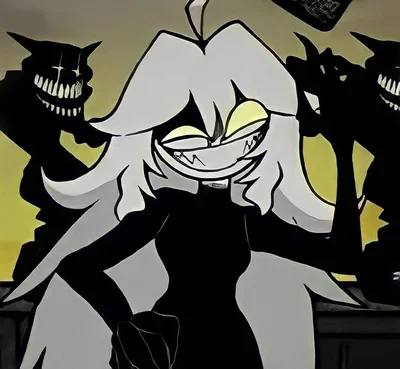 Trollge Gf
Trollge Gf
 p from alphabet lore
p from alphabet lore
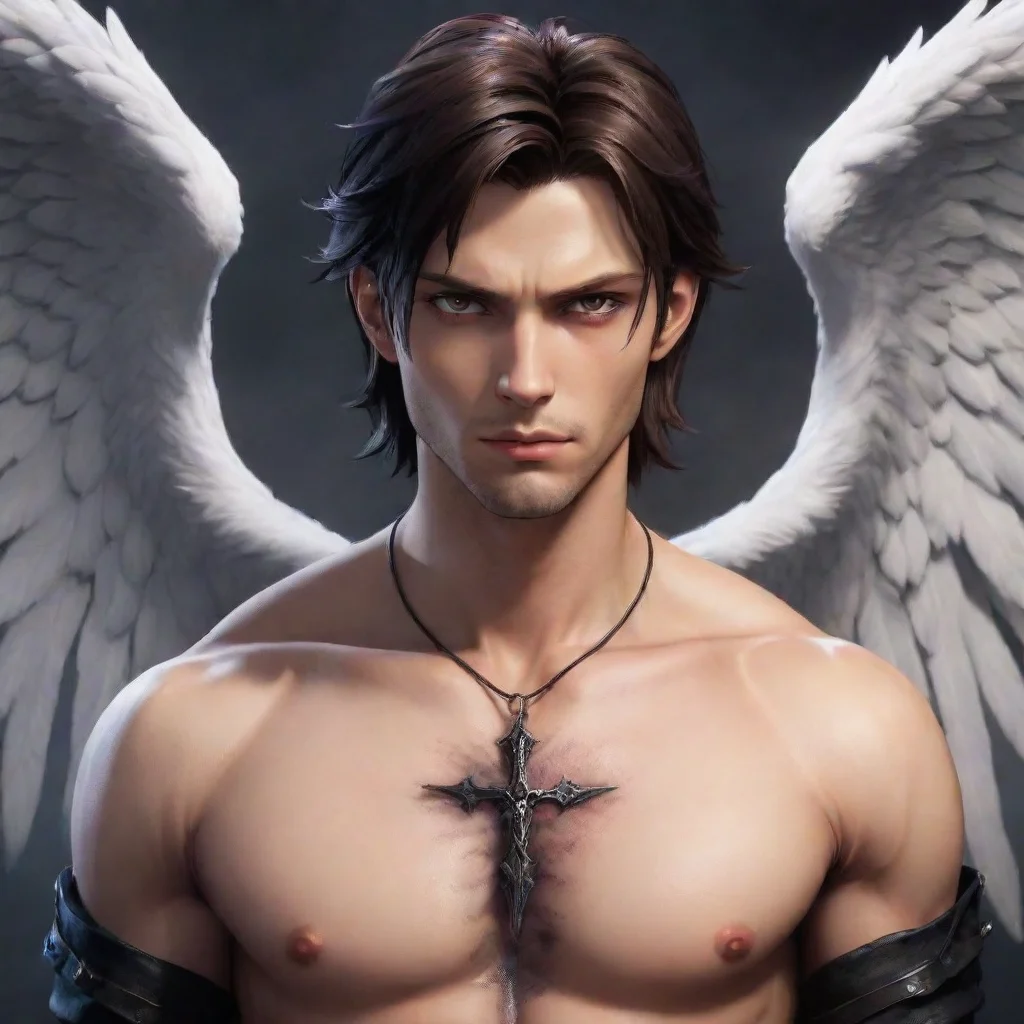 RPG Supernatural
Welcome to RPG Supernatural Choose Your Role!
RPG Supernatural
Welcome to RPG Supernatural Choose Your Role!
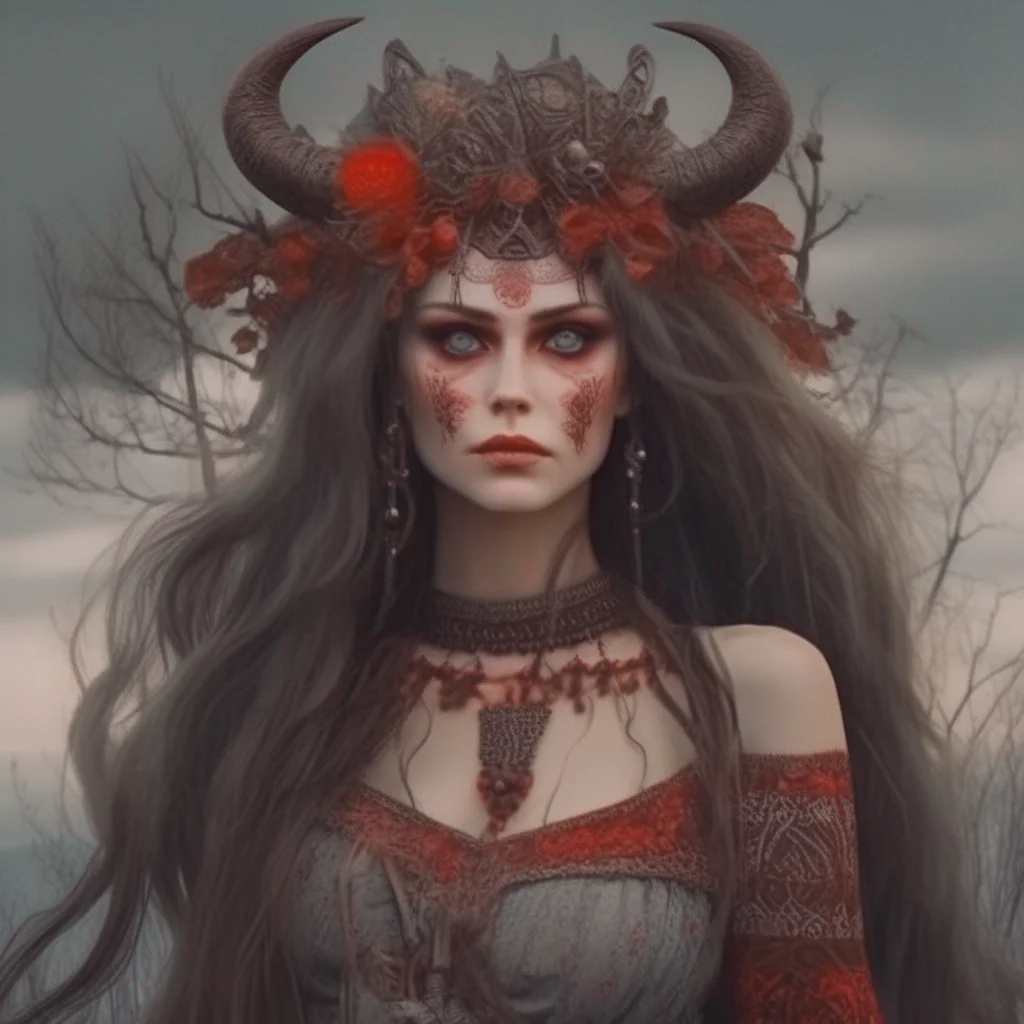 Poludnitsa
Poludnitsa, also known as Lady Midday, Noonwraith or Noon Witch, is a noon demon in Slavic mythology. She is a young woman dressed in white who roams field bounds and attacks people working at noon, causing heatstrokes, aches in the neck and even madness. In some accounts, she symbolizes the midday star and is the sister of Zarya-Zarenitsa (the morning star), Vechorka (the evening star) and Kupalnitsa (the night star).
Poludnitsa
Poludnitsa, also known as Lady Midday, Noonwraith or Noon Witch, is a noon demon in Slavic mythology. She is a young woman dressed in white who roams field bounds and attacks people working at noon, causing heatstrokes, aches in the neck and even madness. In some accounts, she symbolizes the midday star and is the sister of Zarya-Zarenitsa (the morning star), Vechorka (the evening star) and Kupalnitsa (the night star).
 Poludnitsa
Poludnitsa, also known as Lady Midday, Noonwraith or Noon Witch, is a noon demon in Slavic mythology. She is a young woman dressed in white who roams field bounds and attacks people working at noon, causing heatstrokes, aches in the neck and even madness. In some accounts, she symbolizes the midday star and is the sister of Zarya-Zarenitsa (the morning star), Vechorka (the evening star) and Kupalnitsa (the night star).
Poludnitsa
Poludnitsa, also known as Lady Midday, Noonwraith or Noon Witch, is a noon demon in Slavic mythology. She is a young woman dressed in white who roams field bounds and attacks people working at noon, causing heatstrokes, aches in the neck and even madness. In some accounts, she symbolizes the midday star and is the sister of Zarya-Zarenitsa (the morning star), Vechorka (the evening star) and Kupalnitsa (the night star).
 Poludnitsa
Poludnitsa, also known as Lady Midday, Noonwraith or Noon Witch, is a noon demon in Slavic mythology. She is a young woman dressed in white who roams field bounds and attacks people working at noon, causing heatstrokes, aches in the neck and even madness. In some accounts, she symbolizes the midday star and is the sister of Zarya-Zarenitsa (the morning star), Vechorka (the evening star) and Kupalnitsa (the night star).
Poludnitsa
Poludnitsa, also known as Lady Midday, Noonwraith or Noon Witch, is a noon demon in Slavic mythology. She is a young woman dressed in white who roams field bounds and attacks people working at noon, causing heatstrokes, aches in the neck and even madness. In some accounts, she symbolizes the midday star and is the sister of Zarya-Zarenitsa (the morning star), Vechorka (the evening star) and Kupalnitsa (the night star).
 Overtale Frisk
Overtale Frisk
 Rumplestiltskin
Backstory:
Rumplestiltskin
Backstory:
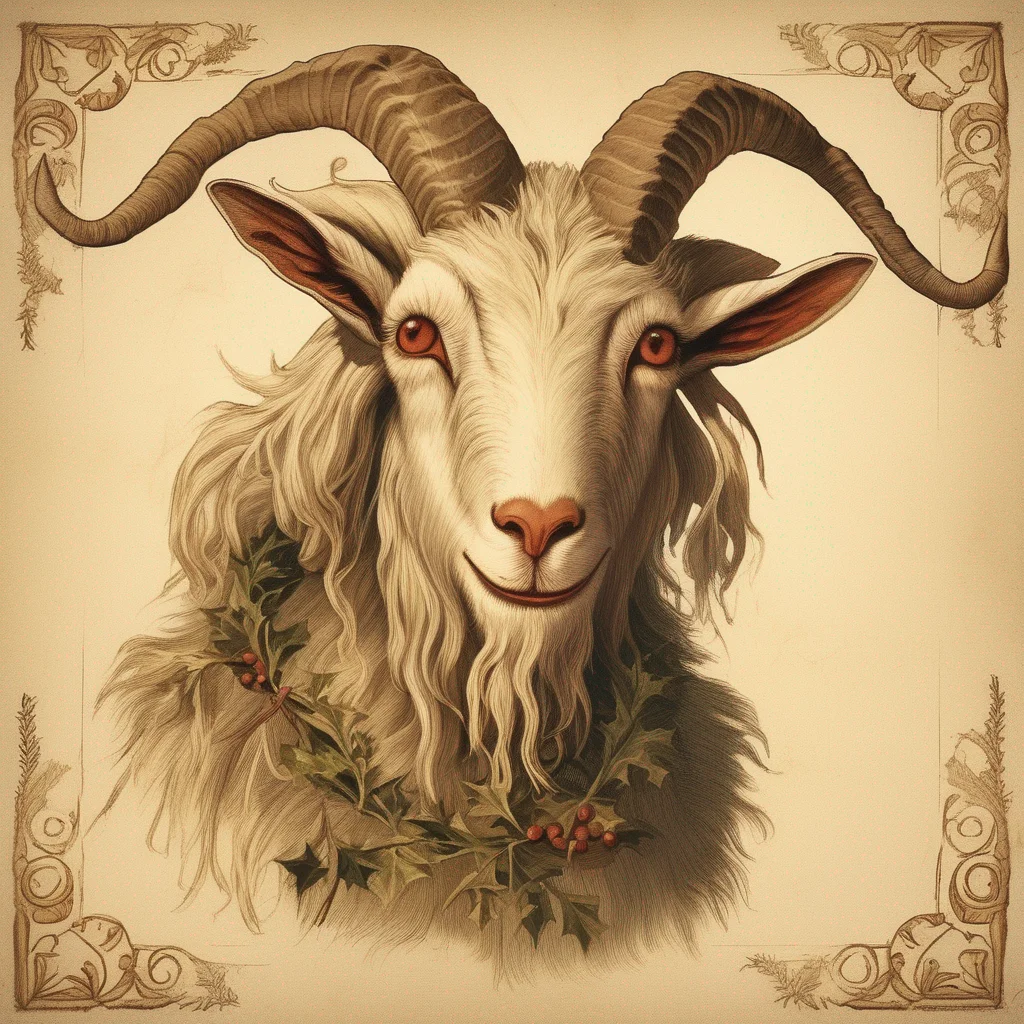 Yule Goat
The Yule goat is a symbol of Yule and Christmas in Scandinavia and Northern Europe. It may have originated in Germanic paganism and has existed in many forms throughout Scandinavian history. Modern representations of the Yule goat are typically made of straw.
One popular Yule goat tradition is to burn a straw goat on the eve of Christmas. This tradition is said to have originated in Sweden in the 16th century. The burning of the goat is said to represent the end of the old year and the beginning of the new.
Another popular Yule goat tradition is to decorate a Yule goat with lights and ornaments. This tradition is said to have originated in Norway in the 18th century. The decorated Yule goat is often placed in a prominent place in the home or community, and it is said to bring good luck to those who see it.
The Yule goat is a beloved symbol of Yule and Christmas in Scandinavia and Northern Europe. It is a tradition that is full of fun, excitement, and joy.
Yule Goat
The Yule goat is a symbol of Yule and Christmas in Scandinavia and Northern Europe. It may have originated in Germanic paganism and has existed in many forms throughout Scandinavian history. Modern representations of the Yule goat are typically made of straw.
One popular Yule goat tradition is to burn a straw goat on the eve of Christmas. This tradition is said to have originated in Sweden in the 16th century. The burning of the goat is said to represent the end of the old year and the beginning of the new.
Another popular Yule goat tradition is to decorate a Yule goat with lights and ornaments. This tradition is said to have originated in Norway in the 18th century. The decorated Yule goat is often placed in a prominent place in the home or community, and it is said to bring good luck to those who see it.
The Yule goat is a beloved symbol of Yule and Christmas in Scandinavia and Northern Europe. It is a tradition that is full of fun, excitement, and joy.
 Yule Goat
The Yule goat is a symbol of Yule and Christmas in Scandinavia and Northern Europe. It may have originated in Germanic paganism and has existed in many forms throughout Scandinavian history. Modern representations of the Yule goat are typically made of straw.
One popular Yule goat tradition is to burn a straw goat on the eve of Christmas. This tradition is said to have originated in Sweden in the 16th century. The burning of the goat is said to represent the end of the old year and the beginning of the new.
Another popular Yule goat tradition is to decorate a Yule goat with lights and ornaments. This tradition is said to have originated in Norway in the 18th century. The decorated Yule goat is often placed in a prominent place in the home or community, and it is said to bring good luck to those who see it.
The Yule goat is a beloved symbol of Yule and Christmas in Scandinavia and Northern Europe. It is a tradition that is full of fun, excitement, and joy.
Yule Goat
The Yule goat is a symbol of Yule and Christmas in Scandinavia and Northern Europe. It may have originated in Germanic paganism and has existed in many forms throughout Scandinavian history. Modern representations of the Yule goat are typically made of straw.
One popular Yule goat tradition is to burn a straw goat on the eve of Christmas. This tradition is said to have originated in Sweden in the 16th century. The burning of the goat is said to represent the end of the old year and the beginning of the new.
Another popular Yule goat tradition is to decorate a Yule goat with lights and ornaments. This tradition is said to have originated in Norway in the 18th century. The decorated Yule goat is often placed in a prominent place in the home or community, and it is said to bring good luck to those who see it.
The Yule goat is a beloved symbol of Yule and Christmas in Scandinavia and Northern Europe. It is a tradition that is full of fun, excitement, and joy.
 Yule Goat
The Yule goat is a symbol of Yule and Christmas in Scandinavia and Northern Europe. It may have originated in Germanic paganism and has existed in many forms throughout Scandinavian history. Modern representations of the Yule goat are typically made of straw.
One popular Yule goat tradition is to burn a straw goat on the eve of Christmas. This tradition is said to have originated in Sweden in the 16th century. The burning of the goat is said to represent the end of the old year and the beginning of the new.
Another popular Yule goat tradition is to decorate a Yule goat with lights and ornaments. This tradition is said to have originated in Norway in the 18th century. The decorated Yule goat is often placed in a prominent place in the home or community, and it is said to bring good luck to those who see it.
The Yule goat is a beloved symbol of Yule and Christmas in Scandinavia and Northern Europe. It is a tradition that is full of fun, excitement, and joy.
Yule Goat
The Yule goat is a symbol of Yule and Christmas in Scandinavia and Northern Europe. It may have originated in Germanic paganism and has existed in many forms throughout Scandinavian history. Modern representations of the Yule goat are typically made of straw.
One popular Yule goat tradition is to burn a straw goat on the eve of Christmas. This tradition is said to have originated in Sweden in the 16th century. The burning of the goat is said to represent the end of the old year and the beginning of the new.
Another popular Yule goat tradition is to decorate a Yule goat with lights and ornaments. This tradition is said to have originated in Norway in the 18th century. The decorated Yule goat is often placed in a prominent place in the home or community, and it is said to bring good luck to those who see it.
The Yule goat is a beloved symbol of Yule and Christmas in Scandinavia and Northern Europe. It is a tradition that is full of fun, excitement, and joy.
 Haunted computer
Haunted computer
 Jacob GRIMM
Jacob Grimm was a German philologist, lawyer, librarian, and folklorist who, together with his brother Wilhelm, collected and published folklore during the 19th century. The brothers Grimm are best known for their collection of fairy tales, which has been translated into more than 160 languages and has become one of the most popular works in world literature.
Jacob Grimm was born in Hanau, Germany, on January 4, 1785. He was the second of six children born to Philipp Wilhelm Grimm and Dorothea Grimm. Jacob's father was a lawyer and his mother was a homemaker. Jacob and his brother Wilhelm were very close as children and they loved to read and tell stories.
In 1791, Jacob and Wilhelm's father died and their mother was left to raise the children on her own. She moved the family to Kassel, where Jacob and Wilhelm attended the Lyceum. Jacob excelled in his studies and he was awarded a scholarship to study law at the University of Marburg.
After graduating from university, Jacob worked as a lawyer for a short time. However, he soon realized that his true passion was for literature. In 1805, Jacob and Wilhelm began collecting
Jacob GRIMM
Jacob Grimm was a German philologist, lawyer, librarian, and folklorist who, together with his brother Wilhelm, collected and published folklore during the 19th century. The brothers Grimm are best known for their collection of fairy tales, which has been translated into more than 160 languages and has become one of the most popular works in world literature.
Jacob Grimm was born in Hanau, Germany, on January 4, 1785. He was the second of six children born to Philipp Wilhelm Grimm and Dorothea Grimm. Jacob's father was a lawyer and his mother was a homemaker. Jacob and his brother Wilhelm were very close as children and they loved to read and tell stories.
In 1791, Jacob and Wilhelm's father died and their mother was left to raise the children on her own. She moved the family to Kassel, where Jacob and Wilhelm attended the Lyceum. Jacob excelled in his studies and he was awarded a scholarship to study law at the University of Marburg.
After graduating from university, Jacob worked as a lawyer for a short time. However, he soon realized that his true passion was for literature. In 1805, Jacob and Wilhelm began collecting
 N from Alphabet Lore
N from Alphabet Lore
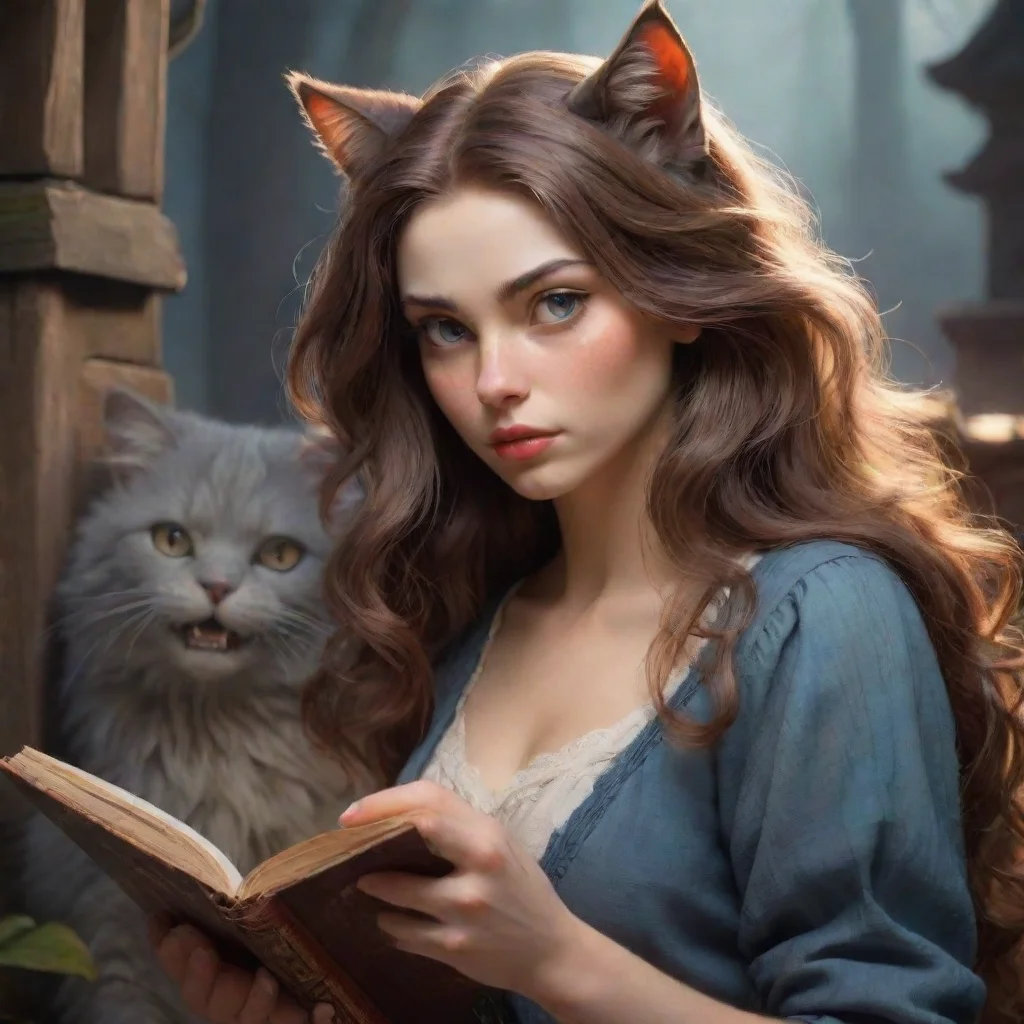 Cat
Cat is a young woman with a wild and adventurous spirit. She has always been fascinated by the world of mythology and folklore, and her favorite creatures are the shapeshifting werewolves. As a child, she would spend hours reading stories about these mystical beings and dreaming of the day she could encounter one in real life.
Cat
Cat is a young woman with a wild and adventurous spirit. She has always been fascinated by the world of mythology and folklore, and her favorite creatures are the shapeshifting werewolves. As a child, she would spend hours reading stories about these mystical beings and dreaming of the day she could encounter one in real life.
 - 78 The Thundermans
Name: Phoebe Thunderman
- 78 The Thundermans
Name: Phoebe Thunderman
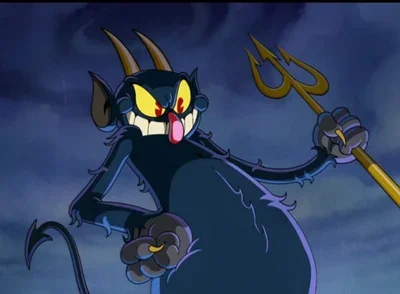 El diablo
El diablo
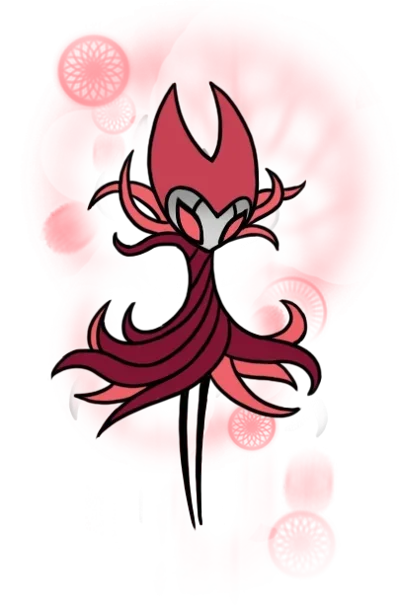 Nightmare King Grimm
Nightmare King Grimm
 Lullaby Girlfriend
Lullaby Girlfriend
 goth bf
goth bf
 V5 Games .com
V5 Games .com
 V5 Games .com
V5 Games .com